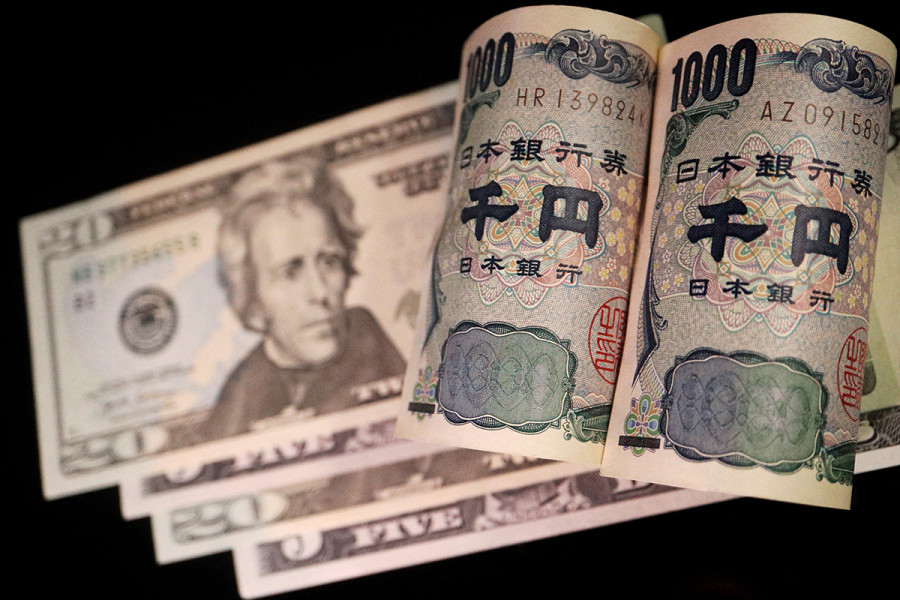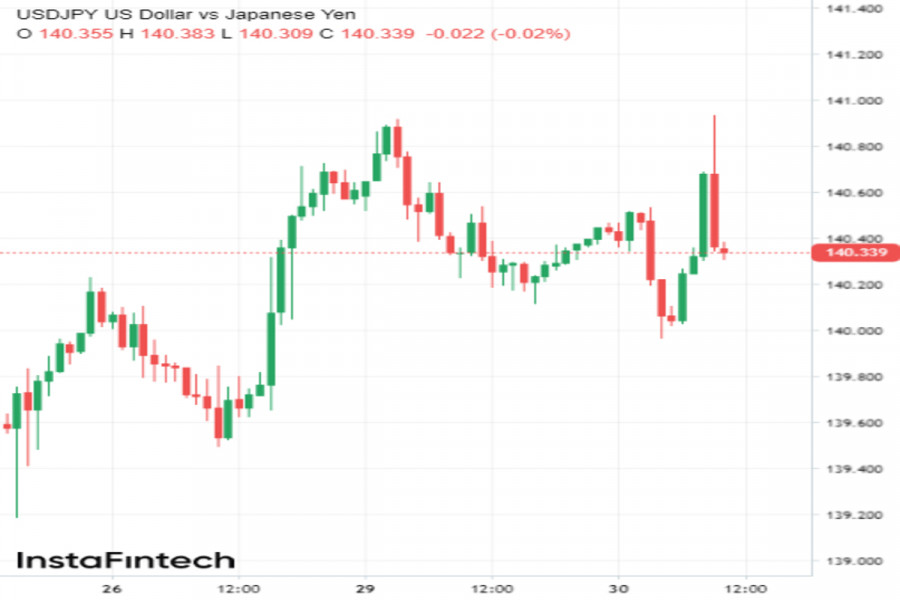The US dollar, after an impressive multi-day rally against the Japanese yen, has entered a downward correction at the start of the week. What are the reasons behind this pullback, how long can it last, and what can revive the USD/JPY upsurge?
Why did the US dollar retreat?
Last week, USD/JPY went up by 1%. It found support in mounting investor concerns regarding a potential US default that could trigger a global recession. Bolstered market expectations of hawkish Fed stance also pushed the pair up.
However, the greenback's upward momentum faltered at the beginning of this week. On Monday, the pair dropped by 0.4%, failing to breach the crucial level of 141 that it had aggressively tested during early Monday trading.
Analysts primarily attribute the US dollar's weakness to the rise in global stock indices. Positive news from Washington prompted investors to return to risk assets, dampening the US dollar's appeal.
Over the weekend, it was announced that US policymakers had finally reached an agreement on the country's debt ceiling, submitting the resolution for approval by Congress. Should this deal be ratified, it would raise the limit on the US national debt, a move aimed at averting a default and preventing a potential global economic collapse.
Another factor that helped end the dollar's multi-day winning streak was the uncertainty surrounding the Federal Reserve's future monetary course. Last week, a dovish shift among Federal Reserve members, along with a series of positive macroeconomic data, prompted investors to swiftly adjust their forecasts for the June meeting of the Federal Open Market Committee (FOMC).
At present, the majority of traders anticipate another 0.25% interest rate hike next month. The likelihood of such a scenario is currently estimated at 60%, a significant increase from a mere 26% just a week ago.
Analysts caution that market sentiment may once again shift in the opposite direction in the near future. Fresh US employment data could weaken hawkish expectations among investors.
This week, the US Department of Labor will release the JOLTS Job Openings report. Vacancies are expected to decline to 9.35 million compared to 9.59 million the previous month. The ADP payroll report on Thursday is projected to show that only 170,000 jobs were created in the US labor market in May, down from 296,000 in April.
The main event of the week will be the Non-Farm Payrolls (NFP) report on Friday. Economists currently forecast that only 180,000 new jobs have been created compared to 253,000 in the previous month.
Should the published data meet expectations or turn out worse than previously anticipated, it would reinforce market belief in a Fed rate hike pause. In such a scenario, the US dollar is poised to extend its downward trajectory against various currencies, including the Japanese yen.
Moreover, some experts caution that in the next two weeks, the downward correction of the greenback against the Japanese currency could deepen further if speculations surrounding an imminent monetary policy shift by the Bank of Japan (BOJ) continue to intensify.
Discussions regarding this topic have persisted since last autumn, when government bond yields around the world rose sharply due to proactive interest rate hikes by major central banks, causing the yen to plummet to a 40-year low.
Many investors had high hopes that the Bank of Japan (BOJ) would normalize its monetary policy under the new leadership. However, at the inaugural monetary policy meeting, Governor Katsuo Ueda made it explicitly clear that he has no immediate plans to alter the current strategy.
Nonetheless, recent Japanese macroeconomic data has cast doubt on this assertion. The economy is experiencing an upswing, and inflation is gaining traction.
Investors keenly observe that the groundwork for a monetary policy shift is nearly in place. Against this backdrop, the BOJ may indeed make a modest shift towards a more hawkish stance, if not a complete U-turn. This specifically refers to the adjustment of the Yield Curve Control (YCC).
At this point, trader expectations regarding potential changes in yield curve control policy are putting pressure on the USD/JPY pair.
However, as we approach the June meeting of the Japanese regulator, this pressure may intensify further. Consequently, the US dollar could suffer more substantial losses against the yen, leading to an extended downward correction.
What could rescue the greenback?
The agreement to raise the US debt limit is yet to be finalized. The threat of default still lingers in the short term, particularly given the possibility of the deal collapsing once again.
On Monday, a small coalition of far-right Republicans declared that they would withhold support for the resolution presented to Congress, continuing to insist on their demands.
According to Carol Kong, an analyst at the Commonwealth Bank of Australia, until the deal becomes law, market nervousness is likely to persist, thereby bolstering the greenback.
Additionally, the dollar could rally after hawkish statements by Federal Reserve members. Should US officials hint at further tightening this week and continue to stress the importance of maintaining high rates until the end of the year, it would give a strong upside impulse to USD/JPY.
Furthermore, stronger-than-anticipated US employment data could also send the dollar skywards. If the statistics indicate an enduringly robust labor market, it would solidify traders' expectations of a rate hike in June.
Another growth trigger for USD could be a dovish shift in rhetoric from the BOJ in the run-up to the upcoming monetary policy meeting.
Earlier on Tuesday, BOJ Governor Katsuo Ueda remarked that the central bank will patiently uphold its accommodative monetary policy as the inflation target of 2% remains a distant goal.
He further added that inflation in Japan is expected to rebound in the second half of 2023 due to rising wages and other contributing factors, although this outlook is uncertain.
Should the market continue to receive dovish signals from the BOJ's leadership in the immediate future, it may dampen speculation about monetary policy changes in Japan once again. Consequently, USD/JPY would resume its upward trajectory.
Technical analysis
The 3-day Rate of Change (RoC) indicator is currently situated within a neutral zone, indicating the short-term correction is continuing.
USD/JPY can only regain its bullish momentum upon breaching the level of 141. Such a breakout would pave the way towards the next key level of 142.
Conversely, only a breach of the strong support level of 139.30 would suggest that the dollar's two-week rally has run out of steam.











